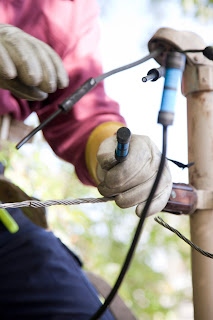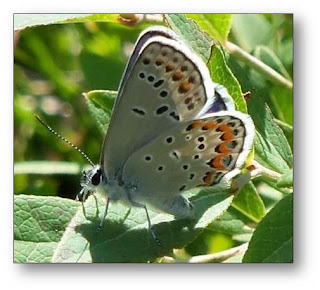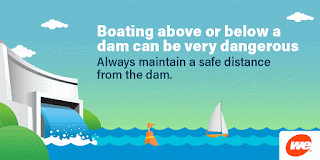Reliable service is a hallmark of We Energies, but sometimes power outages happen. Dave Megna, vice president – Wisconsin system operations, and Duane Miller, manager – gas and electric distribution operations, answer five common questions about We Energies' preparation and response to power outages caused by storms.
How does We Energies prepare when storms are approaching?
Duane: We make extensive preparation for storms. We constantly monitor the weather to anticipate what the impact might be. We use several weather services to do that. Based on that information, we make sure additional employees are on standby to respond once outages start to occur.
Dave: The internal communications that go on in advance of and throughout the storm are just as important. We hold quite a few conference calls to prepare both our field and our office resources. We’ve got people who are available to dispatch orders as well as the crews to make the repairs.
How do you typically respond when there is storm damage?
 |
Dave Megna, vice president -
Wisconsin system operations
|
Dave: Quickly. We determine if the damage is isolated or widespread. We call our first responders in to make the areas safe and deal with downed wires and hazards first, so that we’re keeping our customers and employees safe. Then our repair crews start bringing customers back in service. If there’s extensive damage, we’ll reach out to neighboring utilities to bring on additional resources.
Sometimes, a first responder can restore service, too, but other times, they don’t have all of the equipment or they need to move on and make another location safe. So, a customer might see a truck pull up to the house, do some work and leave, but the power isn’t restored. That can be frustrating, but in reality it was probably because the first responder couldn’t make the final repair or was needed elsewhere on the system.
Why does the power come back on so quickly after some outages but not others?
 |
Duane Miller, manager -
gas and electric distribution
operations
|
Duane: Outages occur for a variety of reasons; therefore, there are some that are restored very quickly and others that take considerably more time. An example of a quick restoration is when we have a tree branch touching a wire. We can just remove that branch. But with a car-pole accident, where the pole is broken and we have to set a new pole and install new equipment, the outage would take much longer.
Dave: Typically, in the summertime, we have severe thunderstorms that produce a lot of wind and lightning. Wind causes a lot of damage – it causes poles to break, trees to break and facilities to be damaged. It generates a lot of extensive repairs. On the shoulder months – in the spring and in the fall – we might see more lightning storms that don’t cause as much damage; they are faster repairs because a fuse blows versus a wire coming down. Our devices that are in place protect the system from severe damage and limit the amount of repair work required. That’s another reason why power can be restored, in some cases, much more quickly.
How do you determine the estimated restoration time (ERT)?
 |
First responders address downed wires
and hazards first but sometimes make
simple repairs. Most repairs require full
crews and specialized equipment.
|
Dave: Every outage is different. Our first responders and repair crews have a pretty good idea based on experience how much time it takes to restore the power. If it’s a simple repair, they can figure it’s going to take them half an hour. If there’s a broken pole and downed wires, they can estimate that the job is going to take about five to six hours. Underground circuits can be more difficult because the crew has to find the fault then dig it up to see how extensive the damage is. Overall, we can have a pretty good idea, but sometimes things happen while they’re making repairs, and it takes a little longer.
During a storm, we assess the damage and typically set a global ERT -- a time when all customers will be restored. When we dispatch that work, one of our repair crews will then set the ERT for the work they’re doing.
Will you contact me after an outage is reported?
Duane: There are several communications that you may receive after you report an outage. If we’re going to extend the ERT by an hour or more, an automated phone call will go out to you. We will also call with an updated ERT if you didn’t have one when you originally called. The other communication you’ll receive is a phone call to verify that you are back in service and provide the cause for the outage if we found one.








